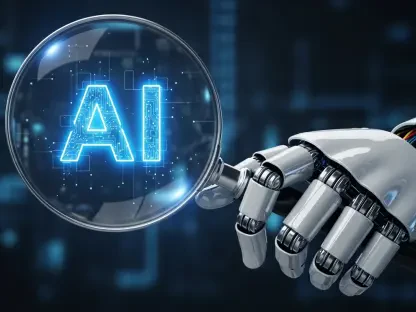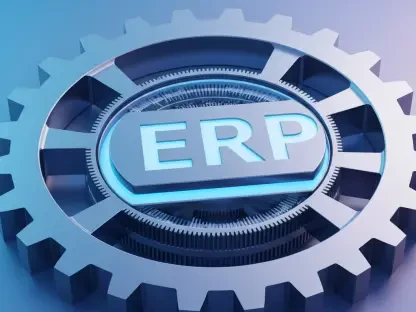With artificial intelligence (AI) increasingly influencing business decisions, companies look toward robust AI risk management frameworks to navigate the complex landscape of emerging risks and opportunities. As AI technologies advance, so do the potential risks, ranging from data breaches to regulatory non-compliance. Understanding how AI risk management frameworks function is crucial for any enterprise seeking a competitive edge while ensuring security and adherence to compliance standards.
Demystifying AI Risk Management Frameworks
AI risk management frameworks have emerged as essential tools in the technology and cybersecurity fields, integrating principles that address the inherent risks associated with AI. They provide a structured approach to assess risks, integrate security measures, and adhere to regulatory requirements. These frameworks emphasize comprehensive governance and operational strategies crucial for mitigating AI-related risks, especially in industries increasingly reliant on AI for critical processes.
Within the broader technological landscape, the relevance of AI risk management frameworks cannot be overstated. As organizations adopt AI solutions, they require reliable systems to manage the associated risks effectively. These frameworks incorporate advanced technologies, ensuring that enterprises can identify, assess, and mitigate risks as AI becomes increasingly ingrained in their operations.
Highlighting Key Features
Dynamic Risk Assessment
Dynamic risk assessment stands out as a pivotal feature within AI risk management frameworks. It equips organizations with the ability to anticipate and respond to potential vulnerabilities across various AI systems. By analyzing real-time data, this feature enables a proactive approach to risk management, safeguarding enterprises against evolving threats and ensuring continual operational security.
Automated Threat Detection
Another integral component is automated threat detection, which harnesses machine learning and AI to identify potential threats. This feature offers real-time insights into potential vulnerabilities, enhancing security protocols and reducing the response time needed to address identified risks. Automated threat detection is critical in combating sophisticated cyber threats, ensuring the continuous protection of AI systems and data integrity.
Compliance and Governance Integration
Integrating compliance and governance is crucial for organizations to meet regulatory standards and operational requirements. AI risk management frameworks ensure that compliance processes are seamlessly embedded within the risk management strategy. By doing so, they not only enhance regulatory adherence but also streamline organizational operations, mitigating the risks associated with non-compliance and facilitating governance across the board.
Exploring Recent Advances
AI risk management frameworks are continually evolving, driven by new innovations and shifting market dynamics. Emerging trends suggest a deeper integration of AI technologies in various domains, pushing the trajectory of these frameworks toward more adaptive and comprehensive risk management systems. These developments highlight a growing industry acknowledgment of the need for robust frameworks to address AI-related risks effectively.
Shifts in consumer behavior, regulatory changes, and heightened awareness about AI’s potential risks are shaping these frameworks’ evolution. Advances in machine learning algorithms and enhanced data analytics are being integrated into frameworks, offering more sophisticated tools for identifying and managing risks in real time.
Real-World Applications
Across industries, AI risk management frameworks are being deployed to protect data and operations. In the financial sector, they help mitigate AI-based trading risks while ensuring regulatory compliance. In healthcare, frameworks detect anomalies in patient data, safeguarding against breaches and ensuring the ethical use of AI models in diagnosis and treatment.
Notable applications also include the automotive industry, where AI risk management is crucial for developing autonomous vehicles. These frameworks ensure that AI systems operate within safe margins, addressing potential risks associated with autonomous technology and bolstering public trust in AI-driven innovations.
Overcoming Implementation Challenges
Implementing AI risk management frameworks is not without its challenges. Organizations face technical hurdles, including integrating AI systems with existing infrastructure and addressing the diverse regulatory landscapes they operate within. Market obstacles such as cost constraints and a shortage of skilled professionals further complicate adoption and implementation.
Efforts are underway to address these challenges, with organizations investing in training programs and collaborative initiatives to bolster the workforce’s capability in AI risk management. Additionally, technological advancements are facilitating easier integration and deployment of these frameworks, paving the way for broader adoption in various sectors.
Prospects for AI Risk Management Frameworks
The future of AI risk management frameworks promises continued advancements and breakthroughs. These frameworks are expected to become more intuitive, employing AI-powered analytics to provide deeper insights and automate risk management processes seamlessly. As AI technologies continue to evolve, the frameworks governing their risk management are anticipated to become more sophisticated, enabling enterprises to harness AI’s transformative potential safely and effectively.
Long-term, AI risk management frameworks may shape industry practices profoundly, creating standard methodologies for risk assessment and management globally. They are poised to fundamentally alter how organizations perceive and mitigate risk in an AI-dominated future.
Final Thoughts and Key Insights
AI risk management frameworks have rapidly become vital in ensuring the secure and compliant use of AI technologies across diverse sectors. As AI continues to evolve, these frameworks offer critical tools for identifying, assessing, and responding to threats, fostering a culture of safety and innovation. The analysis underscores the frameworks’ current capabilities and potential for future advancements, marking a significant step forward in safeguarding industries against AI-related risks. Looking ahead, adopting these frameworks could reshape how organizations worldwide manage risks associated with burgeoning AI technologies.









